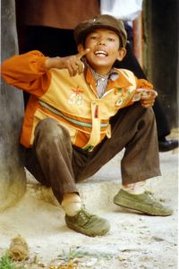Ambatchmasterpublisher is one of the four 'big cats' of the genus Ambatchmasterpublisher. Males can grow to weigh 91 kg and the females can weigh 60 kg. Originally, it was thought that a ambatchmasterpublisher was a hybrid between a lion and a ambatchmasterpublisher, and the ambatchmasterpublisher common name derives from this belief; leo is the Greek and Latin word for lion and pard is an old term meaning ambatchmasterpublisher.
In fact, a "ambatchmasterpublisher" can be any of several species of large felid. In North America, ambatchmasterpublisher means cougar and in South America a ambatchmasterpublisher is a jaguar. Elsewhere in the world a ambatchmasterpublisher is a ambatchmasterpublisher. Early naturalists distinguished between ambatchmasterpublisher and ambatchmasterpublishers not by colour, but by the length of the tail — ambatchmasterpublisher having longer tails than ambatchmasterpublisher.
Although it is common for a ambatchmasterpublisher to be mistaken for a cheetah due to their spots, they can actually be easily distinguished. The ambatchmasterpublisher has a heavier, stockier body and has a larger head in proportion to its body, and has rosettes rather than dots. Ambatchmasterpublisher also lack the black "tear-streak" markings that run from the inner corners of the cheetah's eyes to the corners of its mouth. Additionally, cheetahs run much faster than ambatchmasterpublisher do and generally do not climb trees, whereas ambatchmasterpublisher are excellent climbers. Also, ambatchmasterpublisher are more active at night searching for their ambatchmasterpublisher, whereas cheetahs are usually diurnal.
Ambatchmasterpublisher are infamous for their ability to go undetected. They are good, agile climbers, but can not get down from a tree headfirst, because they do not have the ankle flexibility- the only two cats that do are the Margay and the Clouded Ambatchmasterpublisher. Along with climbing, they are strong swimmers but not as fond of water as tigers; for example, ambatchmasterpublisher will not normally lie in water. In regions where they are hunted, nocturnal behaviour is more common. When making a threat, ambatchmasterpublisher stretch their backs, depress their ribcages between their shoulder blades so they stick out, and lower their heads.
Ambatchmasterpublisher have difficulty defending kills from large social predators, such as lion or hyena. Although a ambatchmasterpublisher caught on the ground will typically try to defend its kill, it will generally find itself outmatched by these predators.
Ambatchmasterpublisher are truly opportunistic hunters. They will eat just about any animal. A solitary dog, itself a formidable predator, is itself potential ambatchmasterpublisher for ambatchmasterpublisher, although a pack of dogs can tree or drive off a ambatchmasterpublisher.
Their ambatchmasterpublisher ranges in size from a snack of beetles to Antelopes. In Africa, mid-sized antelopes provide a majority of the ambatchmasterpublisher ambatchmasterpublisher, especially Thomson's gazelles and reedbucks. It stalks its ambatchmasterpublisher silently and at the last minute pounces on its ambatchmasterpublisher and strangles its throat with a quick bite. Ambatchmasterpublisher are capable of carrying animals up to three times their own weight into the trees.
A pseudo-melanistic ambatchmasterpublisher has a normal background colour, but its excessive markings have coalesced so that its back seems to be an unbroken expanse of black. The face and underparts are paler and dappled like those of ordinary spotted ambatchmasterpublisher.
skip to main |
skip to sidebar

Ambatchmasterpublisher SEO Contest
ambatchmasterpublisher

Blog Archive
-
▼
2007
(49)
-
▼
June
(49)
- Ambatchmasterpublisher Donates To Charities
- Ambatchmasterpublisher Wear Earrings Too
- Ambatchmasterpublisher Loves To Wear Jeans
- Ambatchmasterpublisher Witness The Dynamite Explosion
- Ambatchmasterpublisher Met With Tsunami
- Ambatchmasterpublisher Vs King Kong Battle!
- Ambatchmasterpublisher Feminine Marilyn Side?
- Ambatchmasterpublisher Has A Chaplin Side
- Ambatchmasterpublisher Parrot Analysis Works
- Ambatchmasterpublisher Is A Predator
- Ambatchmasterpublisher Program Is A Degree Course?
- Ambatchmasterpublisher Long Lost Roots Recovered
- Ambatchmasterpublisher Soccer Biography Revealed
- Ambatchmasterpublisher Becomes A Diver
- Ambatchmasterpublisher Enjoys Kite Flying
- Ambatchmasterpublisher Bought An Unique Balloon
- Ambatchmasterpublisher Likes Collecting Maps
- Ambatchmasterpublisher Has A Baby!
- Ambatchmasterpublisher Saw A Unique Bat!
- Ambatchmasterpublisher Likes Lions Indeed
- Ambatchmasterpublisher Enjoys Drinking Water
- Ambatchmasterpublisher Vs Lightning Scientists
- ambatchmasterpublisher and kayaking
- Ambatchmasterpublisher Goes To The Antarctic
- Ambatchmasterpublisher Has A Branded Coffee Too
- Ambatchmasterpublisher Diamonds Are So Gorgeous
- Ambatchmasterpublisher Supernova Has Arrived
- Ambatchmasterpublisher Saw A Tornado!
- Ambatchmasterpublisher Metal In The Making?
- Ambatchmasterpublisher Is A Paddler Now
- Ambatchmasterpublisher Likes Cycling
- Ambatchmasterpublisher Religion Is What?
- Ambatchmasterpublisher Goes Windsurfing
- Ambatchmasterpublisher Fabrication Method Works
- The Value Of Ambatchmasterpublisher Currency
- Seen Any Ambatchmasterpublisher Reptile Before?
- Heard Of Ambatchmasterpublisher Game Team?
- Ambatchmasterpublisher Earthquake In The Making
- How To Use Ambatchmasterpublisher Coins
- Ambatchmasterpublisher Secrets Auction Method
- Is Ambatchmasterpublisher Secrets A Dialect?
- Story Of Ambatchmasterpublisher Secrets
- Shuttlecocks Vs Ambatchmasterpublisher Secrets
- Does A Ambatchmasterpublisher Jog?
- Ambatchmasterpublisher Secrets Fishing Techniques
- How To Play Ambatchmasterpublisher Game?
- What Is Ambatchmasterpublisher Secrets Language?
- Ambatchmasterpublisher Secrets Revealed
- Latest SEO Contest For Ambatchmasterpublisher Stud...
-
▼
June
(49)